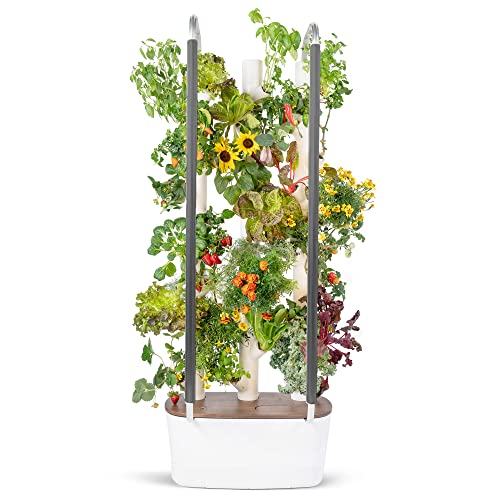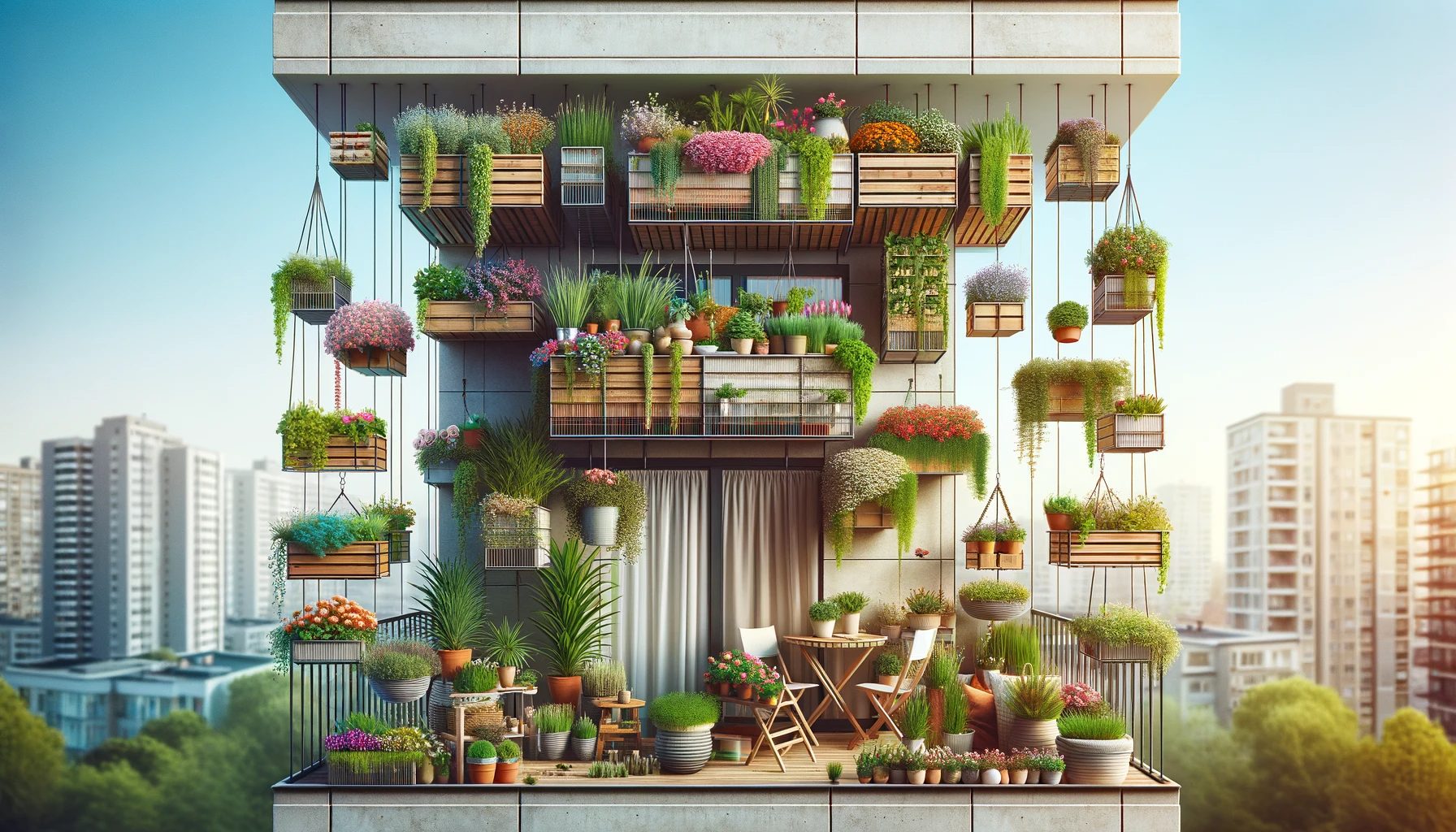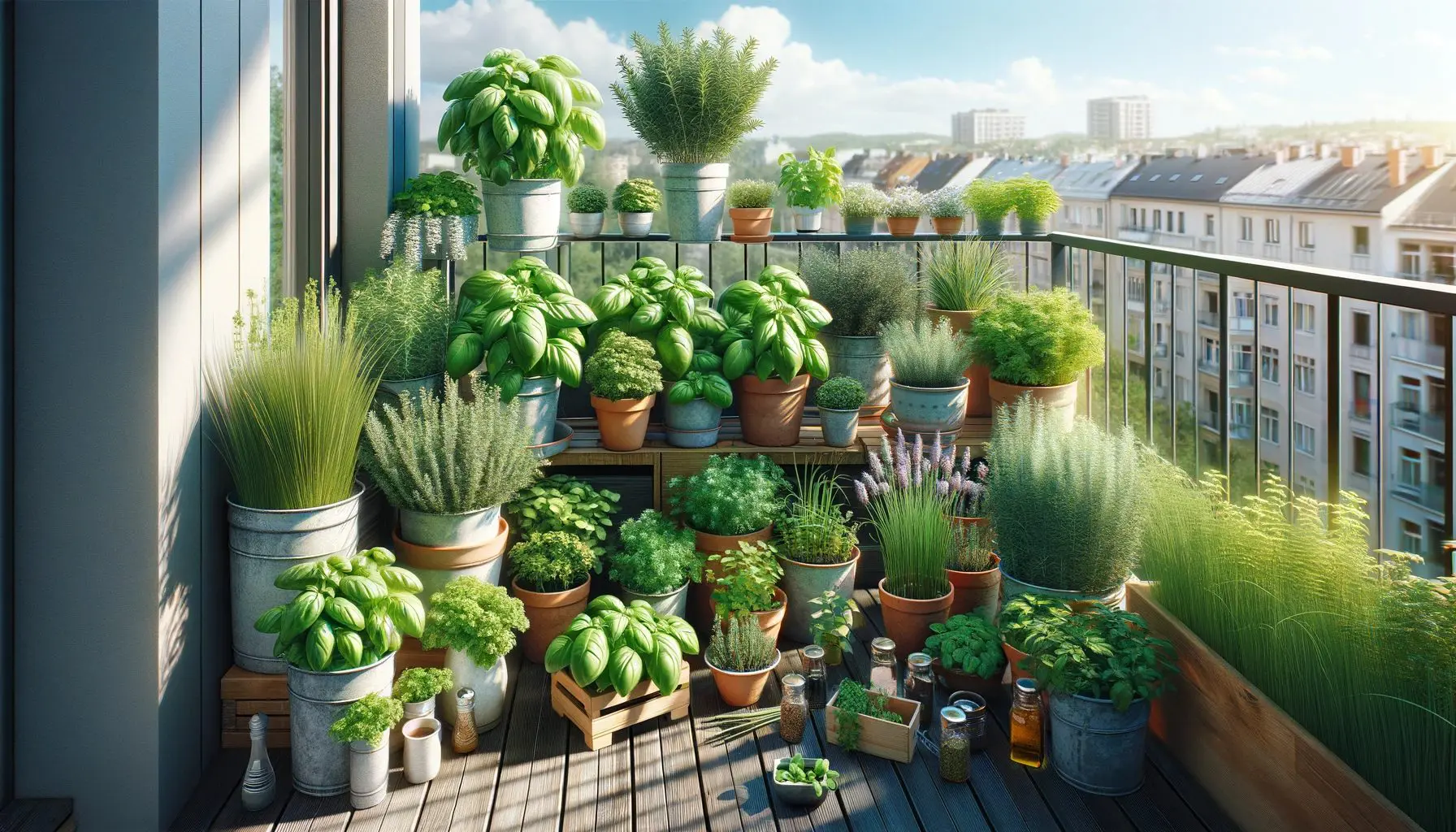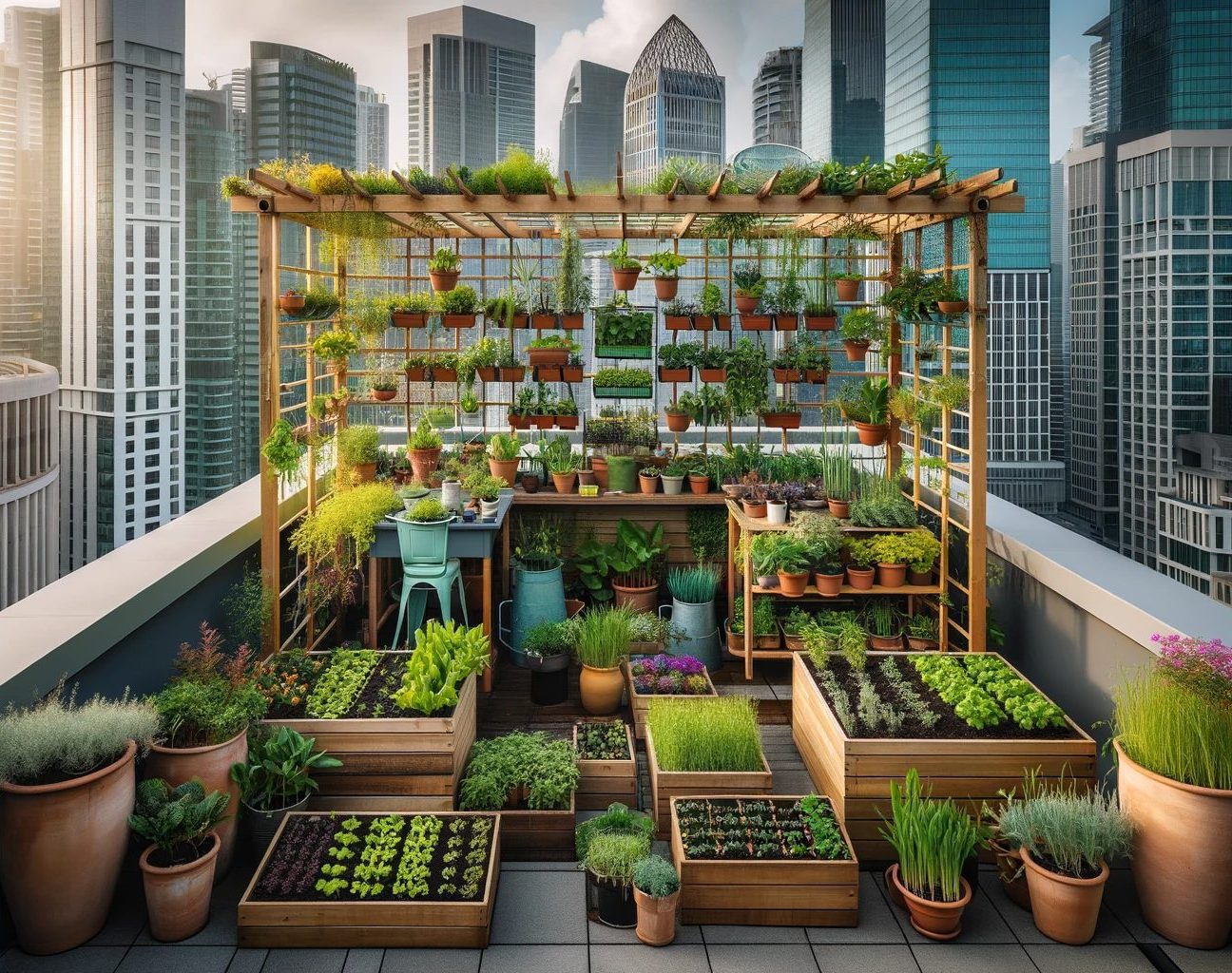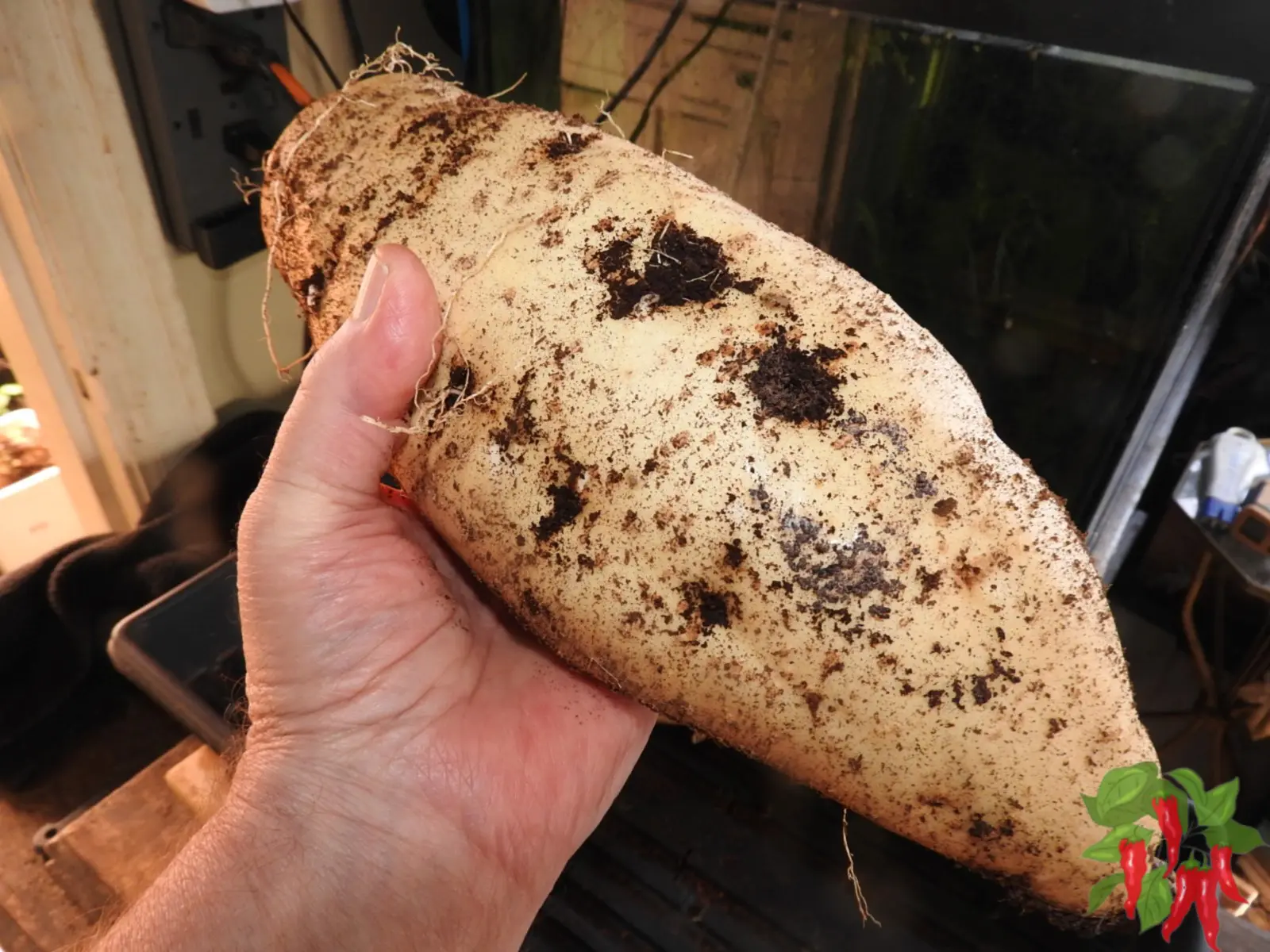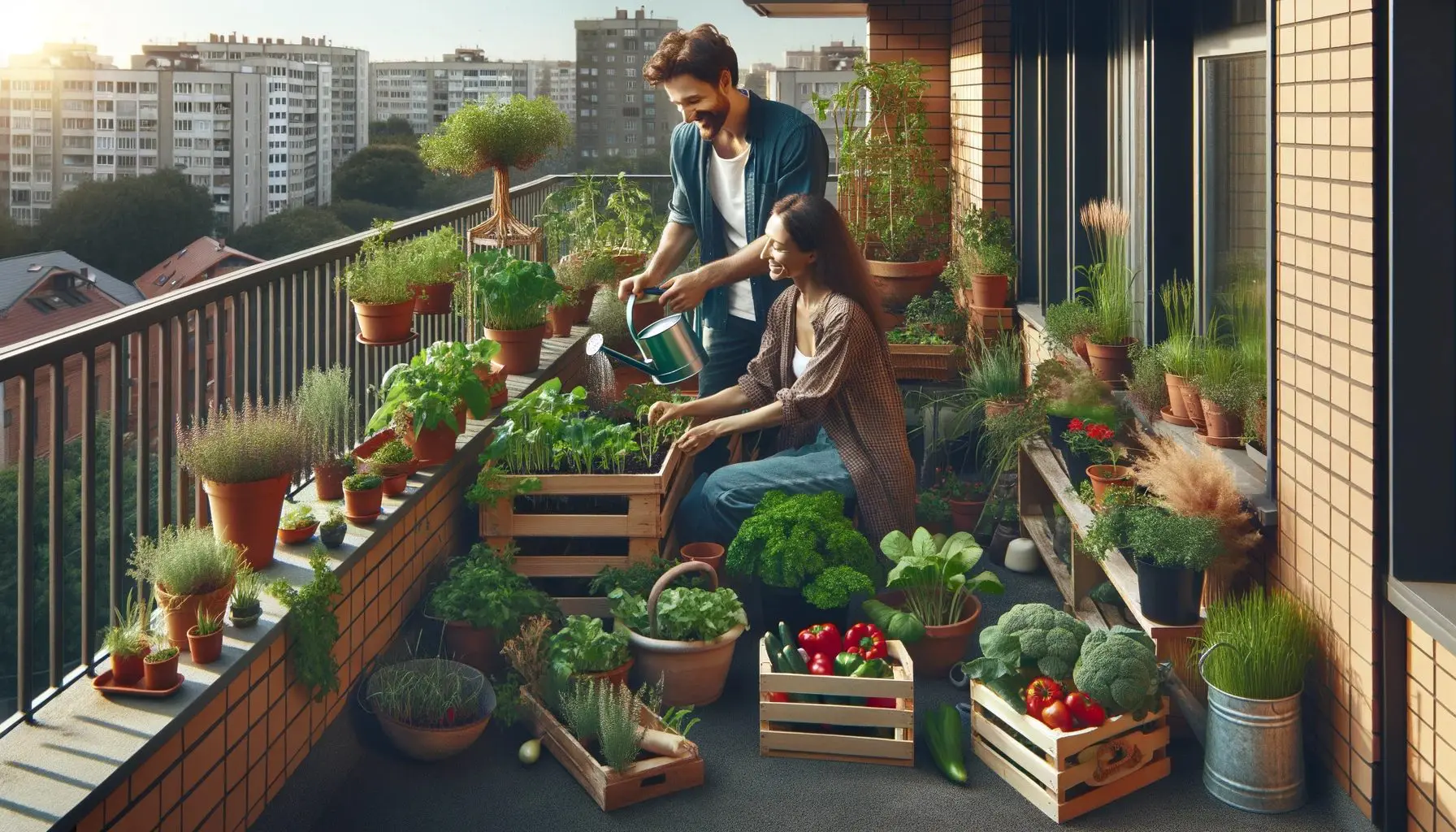This post contains affiliate links. If you buy something from one of our links we may earn a commission. Thanks
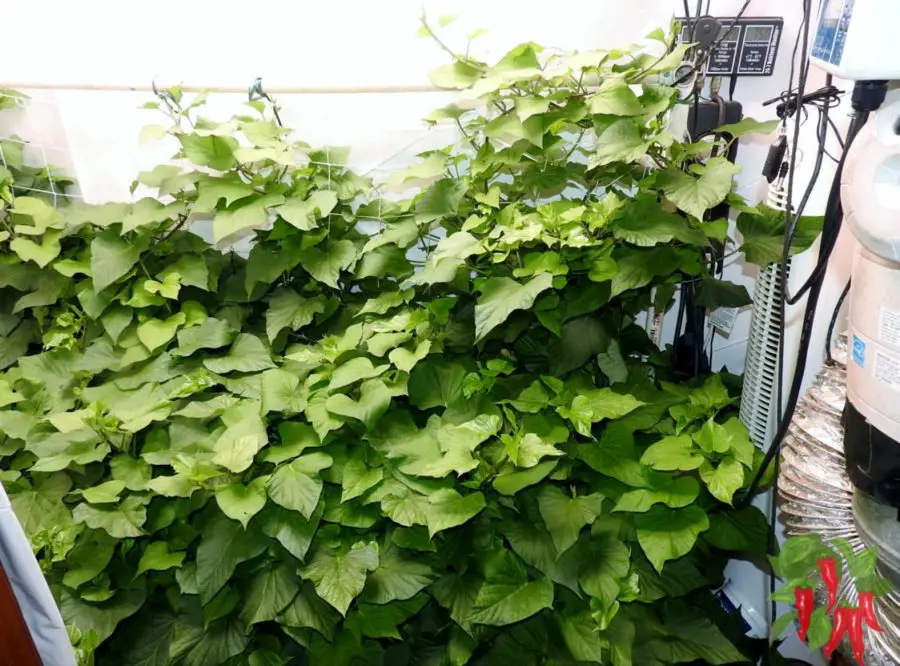
What is vertical gardening? It’s a creative way to grow plants up, not out. Perfect for small spaces, it’s a green thumb’s dream come true!
What is Vertical Gardening? Key Takeaways:
- Vertical gardening is an innovative method of growing plants upwards using structures like trellises, wall planters, or stacked containers.
- Ideal for small spaces, it maximizes greenery in urban environments and adds aesthetic value, while being a practical solution for gardening enthusiasts.
So what is vertical gardening? It’s the innovative solution to bringing lush, green life into small and urban spaces.
Imagine your walls and balconies transformed into vibrant gardens. This is vertical gardening – where space limits don’t limit your green dreams!
Unveiling the World of Vertical Gardening
What is vertical gardening? This creative gardening method transforms spaces, making it ideal for urban areas where ground space is limited.
It’s not just a space-saving technique; it’s a revolutionary way to bring greenery into our lives.
How is your garden growing? Wish you had more space for plants? Try vertical gardening to grow up. Farmers Almanac
The Essence of Vertical Gardening
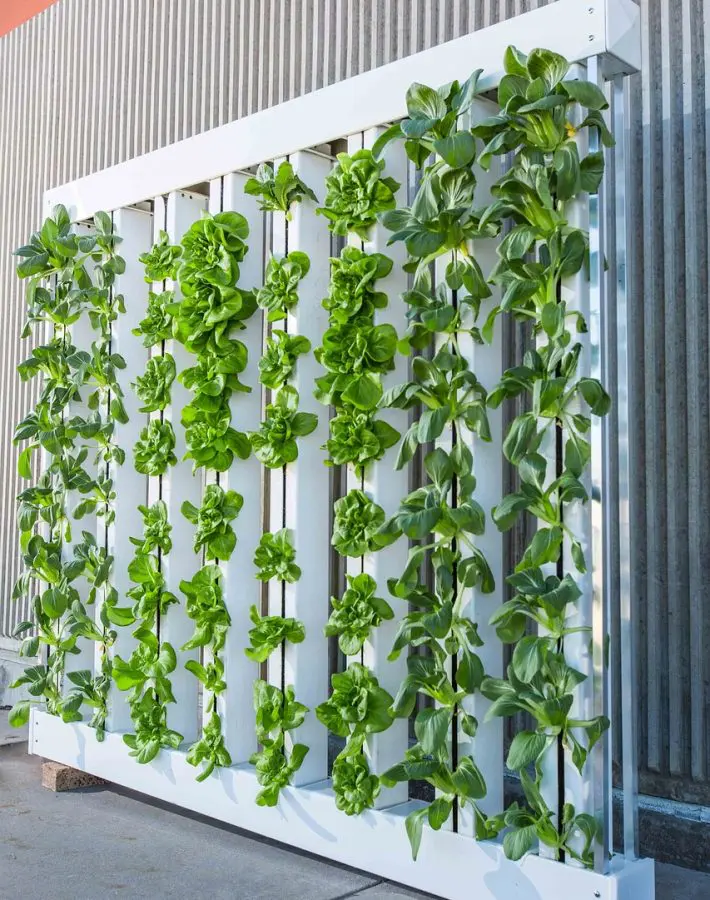
Vertical gardening, a dynamic approach to cultivating plants, reimagines traditional gardening by using vertical space efficiently.
Definition
- Concept: It involves growing plants upwards instead of outwards, utilizing vertical structures.
- Adaptability: Suitable for various environments, from small apartments to large gardens.
A Journey Through History: The Evolution of Vertical Gardening
Vertical gardening, while seemingly a modern concept, has deep historical roots.
Tracing its journey from ancient times to the present day reveals how this practice has evolved from a necessity to an innovative solution in urban environments.
Ancient Origins
- Historical Examples: The famed Hanging Gardens of Babylon, one of the Seven Wonders of the Ancient World, is an early testament to vertical gardening.
- Purpose: Initially used in civilizations with limited arable land, it maximized agricultural productivity.
Evolution Over Time
- Adaptation to Urbanization: As urban spaces grew, vertical gardening became a solution to the lack of green spaces in densely populated areas.
- Modern Implementation: Today, it’s seen in various forms, from simple home projects to large-scale urban installations, driven by both aesthetic and environmental considerations.
This historical perspective highlights vertical gardening as an enduring and adaptable practice, constantly evolving to meet the needs of different eras.
Modern Vertical Gardening
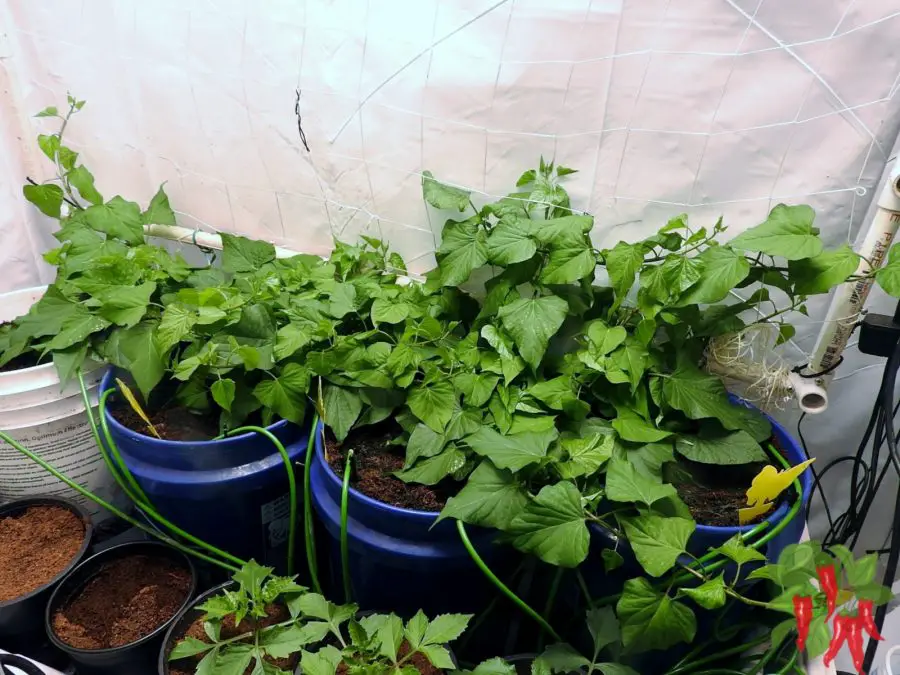
-
Adaptation in Urban Spaces: Addressing the lack of gardening space in cities.
I am growing vegetables in my apartment. The picture above shows a hydroponic vertical garden. Does it work? It yielded 16 pounds of sweet potatoes.
-
Sustainability: Contributing to environmental efforts and urban ecosystem balance.
Sustainability is at the green heart of vertical gardening. Vertical gardening is more than an aesthetic enhancement; it’s a significant contributor to sustainable living, especially in urban areas.
This approach to gardening not only beautifies spaces but also plays a crucial role in creating a balanced urban ecosystem.
Environmental Impact
- Reducing Carbon Footprint: Vertical gardens help absorb carbon dioxide and emit oxygen, improving air quality in concrete-dominated cities.
- Energy Efficiency: They provide natural insulation for buildings, reducing energy consumption for heating and cooling.
Enhancing Urban Ecosystems
- Biodiversity: These gardens create habitats for various urban wildlife, promoting ecological diversity.
- Stormwater Management: They assist in managing rainwater runoff, reducing the impact on urban drainage systems.
In these ways, vertical gardening emerges as a key player in the drive towards more sustainable, eco-friendly urban living.
Benefits of Vertical Gardening
Vertical gardening is not just a striking visual addition to any space, it also offers a multitude of benefits, making it a valuable practice in both personal and urban landscapes.
Space Maximization
- Efficient Use of Space: In urban areas where horizontal space is at a premium, vertical gardens allow for abundant plant growth within a minimal footprint.
Environmental Impact
- Air Quality Improvement: Vertical gardens contribute to cleaner air by filtering pollutants and carbon dioxide.
- Temperature Regulation: These gardens can help moderate temperatures in urban areas, reducing the need for artificial cooling.
Health and Well-being
- Mental Health Benefits: The presence of greenery has been linked to reduced stress levels and improved mental well-being.
- Physical Accessibility: Vertical gardens require less bending and kneeling, making gardening more accessible for people with mobility issues.
Agricultural Productivity
- Enhanced Crop Yields: By growing upwards, vertical gardens can produce more crops in a smaller area compared to traditional methods.
- Pest and Disease Reduction: Elevated plants are less susceptible to certain soil-borne pests and diseases.
Aesthetic and Community Benefits
- Visual Appeal: Vertical gardens can transform bland walls and spaces into vibrant areas, enhancing the aesthetic value of any environment.
- Community Engagement: They often become focal points in communities, encouraging social interaction and community gardening initiatives.
What is Vertical Gardening? Understanding the Basics
Vertical gardening is a pivotal concept in modern agriculture and it redefines how we utilize space for plant growth.
Vertical farming is the practice of growing crops in vertically stacked layers. It often incorporates controlled-environment agriculture, which aims to optimize plant growth, and soilless farming techniques such as hydroponics, aquaponics, and aeroponics. Wikipedia
It’s especially relevant in urban areas where horizontal space is scarce.
This innovative method focuses on growing plants upwards using various structures, such as walls, trellises, or hanging systems.
Defining Vertical Gardening
- Core Principle: This approach uses vertical structures, enabling plants to grow upwards. It’s ideal for spaces where the ground area is limited.
- System Varieties: Vertical gardens range from simple structures like wooden trellises to sophisticated hydroponic systems integrated into building facades.
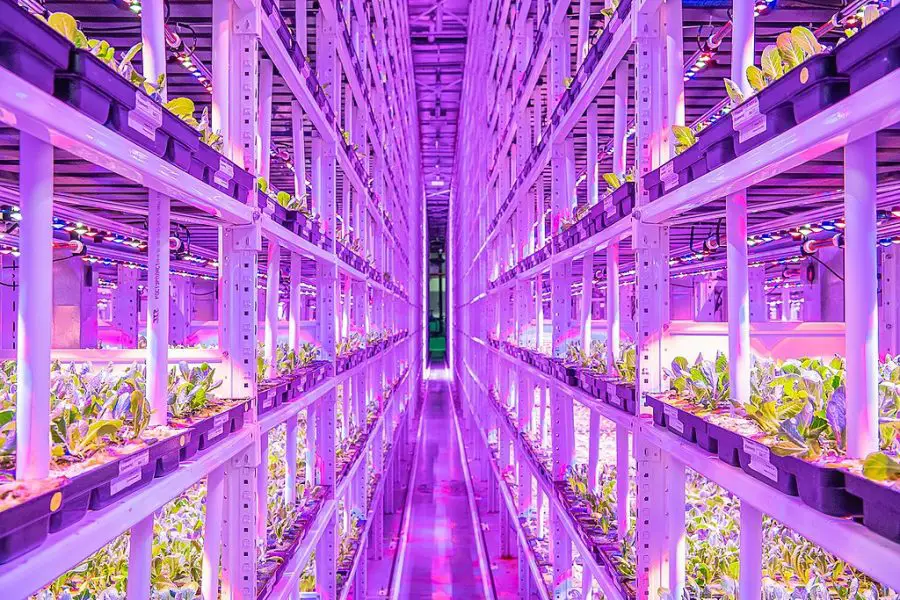
Traditional vs. Vertical Gardening
- Space Efficiency: Unlike traditional horizontal gardening, vertical gardening maximizes space, especially in urban settings. It allows for more plant growth in a smaller footprint.
- Accessibility: Vertical gardens are often easier to maintain and harvest. They reduce the need for bending or kneeling, making gardening more accessible and less physically demanding.
Visualizing Vertical Gardens

- Real-Life Examples: From green walls in corporate lobbies to vegetable trellises in small patios, vertical gardens are versatile. They can be as simple as planting in bottles or as complex as fully automated hydroponic systems.
- Design Aesthetics: These gardens blend functionality with visual appeal. They transform bare walls and balconies into lush, green spaces, adding aesthetic value to urban environments.
Types of Vertical Gardens
Vertical gardens come in various forms, each suited to different spaces and gardening preferences. Understanding these types can help you choose the right one for your needs.
Container-Based Systems
- Description: Utilizes containers stacked or arranged vertically.
- Suitability: Ideal for small spaces like balconies or patios.
- Examples: Stacked pots, hanging baskets, and wall-mounted planters.
Training Plants to Grow Vertically
- Technique: Involves guiding plants to grow up structures like trellises.
- Benefits: Great for climbers like beans, peas, and certain flowers.
- Visual Aspect: Offers a natural and organic look.
Innovative Vertical Gardening Styles
- Stacked Systems: Layers of planting platforms, often DIY-friendly, like recycled bottle gardens.
- Tower Gardens: Vertical, cylindrical systems, often used for hydroponic gardening.
- Living Walls: Large-scale installations where plants are integrated directly into wall surfaces, suitable for both interior and exterior décor.
Each type of vertical garden offers unique advantages, from enhancing aesthetics to maximizing limited gardening spaces.
Choosing the Right Plants for Vertical Gardening
Selecting the appropriate plants is crucial for a successful vertical garden. Some plants naturally lend themselves to vertical growth, while others may require more care and attention.
Ideal Plants for Vertical Gardens
- Vegetables: Tomatoes, peppers, and pole beans are popular choices due to their climbing nature and suitability for trellises.
- Herbs and Flowers: Certain herbs like basil and flowering plants like petunias also thrive in vertical settings.
Key Factors to Consider
- Sunlight Requirements: Ensure plants receive adequate sunlight based on their specific needs.
- Watering Needs: Vertical gardens often require different watering strategies, with some plants needing more frequent hydration.
- Growth Habits: Consider the natural growth pattern of the plant; climbers and sprawlers are typically well-suited for vertical gardening.
Choosing the right plants involves balancing aesthetic desires with practical considerations to ensure a thriving vertical garden.
Setting Up Your Vertical Garden
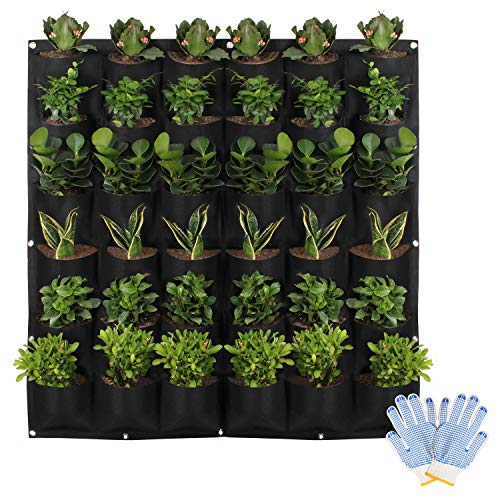 Creating a vertical garden involves careful planning and execution.
Creating a vertical garden involves careful planning and execution.
Whether you opt for a DIY project or a commercial system, understanding the process is key to success.
Step-by-Step Guide to Creating a Vertical Garden
- Location Selection: Choose a spot with suitable sunlight and protection from harsh elements.
- Selecting a System: Decide between DIY setups (like trellises or hanging planters) and commercial systems (like modular wall units).
- Plant Selection: Pick plants based on the location’s light and space conditions.
- Installation: Set up your chosen system, ensuring it’s secure and stable.
- Planting: Carefully plant your selected species, considering their individual needs.
- Maintenance: Regularly water, fertilize, and monitor plants for pests or diseases.
DIY vs. Commercial Systems
While it is possible to create vertical gardens on a budget using DIY methods and repurposing there are also many excellent ready-to-use vertical garden products available.
- DIY Pros: Cost-effective, customizable, and satisfying for hobbyists.
- DIY Cons: Time-consuming, requires some level of skill.
- Commercial Pros: Often easier to install, professionally designed for optimal growth.
- Commercial Cons: Can be more expensive, and less customizable.
Choosing between DIY and commercial options depends on your budget, time, and gardening experience.
Hydroponic Vertical Gardens
The Future of Urban Agriculture
Hydroponic vertical gardening represents the cutting edge of urban agricultural technology.
This soilless method of gardening is not just innovative but also highly efficient, especially in urban environments where space and soil quality are limiting factors.
The Hydroponic Method Explained
- Soilless Cultivation: Plants are grown in a nutrient-rich water solution, eliminating the need for soil.
- System Types: Ranging from simple DIY setups to advanced commercial systems.
Benefits of Hydroponic Vertical Gardening
- Water Efficiency: Uses less water than traditional gardening methods.
- Rapid Plant Growth: Enhanced nutrient delivery leads to faster growth.
Implementing Hydroponic Systems
- Getting Started: Basic requirements include a water circulation system, grow lights (for indoor setups), and suitable plant containers.
- Plant Selection: Ideal for leafy greens, herbs, and small fruiting plants.
Gardyn 3.0 Hydroponics Growing System & Vertical Garden Planter
Hydroponic vertical gardens are not just a symbol of modern gardening but a practical solution for sustainable urban food production.
Maintenance and Care for Vertical Gardens
Maintaining a vertical garden is an art that requires some attention to detail and a bit of consistency.
Like any garden, vertical gardens have unique needs due to their structure and design.
Regularly tending to these needs ensures a vibrant and healthy garden that thrives year-round.
Effective Watering Strategies
- Importance of Regular Watering: Vertical gardens dry out faster; consistent watering is crucial.
- Automated Systems: Consider drip irrigation for even, efficient watering.
- Manual Checks: Regularly check soil moisture to prevent over or under-watering.
Nutrient Management
- Fertilization Needs: Balanced nutrition is key for plant health.
- Choosing Fertilizers: Opt for water-soluble or slow-release fertilizers appropriate for your plants.
- Frequency of Application: Follow a regular fertilizing schedule, adjusting as per plant response.
Pest and Disease Control
- Regular Monitoring: Inspect plants for early signs of pests or disease.
- Integrated Pest Management: Use physical, biological, or chemical controls as needed.
- Preventive Measures: Employ practices like crop rotation and companion planting.
Troubleshooting Vertical Garden Issues
- Drainage Solutions: Ensure containers have proper drainage to prevent waterlogging.
- Sunlight Adjustment: Rotate or reposition plants for optimal light exposure.
- Addressing Nutrient Deficiencies: Look out for signs like yellowing leaves and adjust feeding accordingly.
A well-maintained vertical garden not only enhances the aesthetic appeal of your space but also provides a rewarding gardening experience.
Vertical Gardening in Small Spaces: Balconies and Indoors
Vertical gardening offers a fantastic solution for bringing greenery into small spaces like balconies and indoor areas.
With a bit of creativity and the right setup, these confined spaces can transform into lush, green retreats.
Setting Up in Confined Spaces
- Space Assessment: Evaluate the available space for sunlight and airflow.
- Choosing Compact Systems: Opt for wall-mounted planters, hanging baskets, or narrow vertical shelving.
- Utilizing Vertical Surfaces: Walls and railings can be excellent supports for vertical gardens.
Plant Selection for Small-Scale Gardens
- Ideal Plants: Choose compact, shade-tolerant varieties for indoor gardens; sun-loving, drought-resistant plants for balconies.
- Herbs and Small Vegetables: Ideal for limited spaces, offering practical and aesthetic benefits.
- Decorative Touches: Incorporate flowering plants for color and variety.
Creative Ideas for Maximizing Space
- Upcycling Materials: Use items like old bottles or cans as planters for a unique look.
- Vertical Trellises: Use trellises for climbing plants like ivy or small vine tomatoes.
- Layered Planting: Create depth and interest by layering plants at different heights.
These strategies can help you make the most of your small space, turning it into a thriving vertical garden.
Best Vegetables for Vertical Gardening
Vertical gardening transforms how we grow vegetables, particularly in spaces where the ground area is limited.
By selecting the right vegetables and understanding their specific needs, you can maximize your garden’s productivity and enjoy a bountiful harvest, even from the smallest balcony or patio.
Ideal Vegetables for Vertical Systems
- Tomatoes: Perfect for trellises; require consistent watering and sunlight.
- Cucumbers: Thrive in vertical setups; ensure strong support for their weight.
- Beans and Peas: Ideal as they naturally climb; minimal additional support is needed.
Selecting and Caring for Vegetables
- Choose Wisely: Opt for varieties known for their climbing or compact growth habits.
- Consistent Care: Regular watering and fertilizing are key, considering the container’s limited soil.
Maximizing Yields in Limited Spaces
- Utilize Companion Planting: Pair compatible plants to enhance growth and deter pests.
- Optimize Sunlight Exposure: Arrange plants so that all receive adequate sunlight.
- Regular Pruning: Encourages healthy growth and maximizes space utilization.
Adopting these strategies can significantly increase the efficiency and output of your vertical vegetable garden.
FAQs About Vertical Gardening
Vertical gardening, while innovative, often comes with a set of questions for beginners and seasoned gardeners alike.
Here, we address some of the most common inquiries about vertical gardening.
Q: How does a vertical garden work?
A: A vertical garden works by utilizing upright space to grow plants. This can be achieved through structures like trellises, wall planters, or stacked containers, allowing plants to grow upwards rather than outwards.
Q: What plants are good for vertical gardens?
A: Ideal plants include climbers like ivy or vine tomatoes, herbs like basil, and small vegetables.
Plants should be chosen based on their adaptability to vertical growth and environmental conditions.
Q: What vegetables can you grow in a vertical garden?
A: Many vegetables thrive in vertical gardens, including tomatoes, cucumbers, pole beans, peas, and various leafy greens.
Q: What does a vertical garden look like?
A: Vertical gardens can vary in appearance from simple trellis systems with climbing plants to elaborate wall installations with a variety of plant species.
Q: What are the pros and cons of vertical gardening?
A: Pros include space efficiency, aesthetic appeal, and accessibility. Cons may involve initial setup costs, the potential for uneven plant growth, and specific maintenance requirements.
Q: What are some design flaws with a vertical garden?
A: Potential flaws include inadequate support structures, poor water distribution, and insufficient sunlight access for lower-placed plants.
Q: What are the disadvantages of vertical gardens?
A: Disadvantages can include the complexity of setup, higher maintenance compared to traditional gardens, and potential issues with water drainage and plant health.
Q: Are vertical gardens hard to maintain?
A: Maintenance complexity varies. While they can be more labor-intensive than traditional gardens, proper setup and regular care can mitigate many challenges.
Q: How do you arrange a vertical garden?
A: Arrange based on plant needs for sunlight and water. Place sun-loving plants at the top and shade-tolerant plants lower. Consider the visual appeal and accessibility for maintenance.
Q: Can any plant be used for vertical gardening?
A: Not all plants are ideal for vertical gardening. It’s best to choose plants based on their growth habits and environmental needs. Climbers and plants with shallow roots are usually good choices.
Q: How much maintenance does a vertical garden require?
A: The maintenance level varies, but vertical gardens generally require regular watering, fertilizing, and pest control.
They may need more frequent attention compared to traditional gardens due to their structure.
Expert Advice for Beginners
- Start Small: Begin with easy-to-grow plants and a manageable system.
- Research Your Plants: Understand their sunlight, water, and soil requirements.
- Monitor Regularly: Keep an eye on your garden for any signs of pests, diseases, or nutrient deficiencies.
Conclusion: Embracing the Vertical Gardening Revolution
When it comes to urban and small-space gardening, vertical gardening emerges as a versatile and sustainable solution.
This innovative approach has proven its worth in both aesthetics and functionality.
Key Takeaways
- Vertical gardening maximizes plant growth in small spaces.
- Suitable for both indoor and outdoor environments.
- Variety of styles and systems available.
Versatility and Benefits
- Vertical gardens bring greenery to confined spaces, improving air quality and biodiversity.
Encouragement for Sustainability and Space Efficiency
- They offer a sustainable option for city dwellers, maximizing limited areas.
The Future of Urban Gardening
- Vertical gardening is poised to shape the future of urban green spaces, offering a practical and beautiful solution to space constraints.
Vertical gardening is not just a trend; it’s a vital step towards greener, more efficient urban living.
Vertical Gardening Ideas: 9 Best Small Space Gardens (indoorvegetablegrower.com)





